Some of the links in this post may be affiliate links.
Should you be using a soil moisture meter for your houseplants? After so many people using these instruments came to me complaining about their plants dying, I wanted to give you my thoughts on using moisture meters for houseplants.
I have 3 main reasons not to use soil moisture meters, and 3 things that you can do instead of using these instruments.
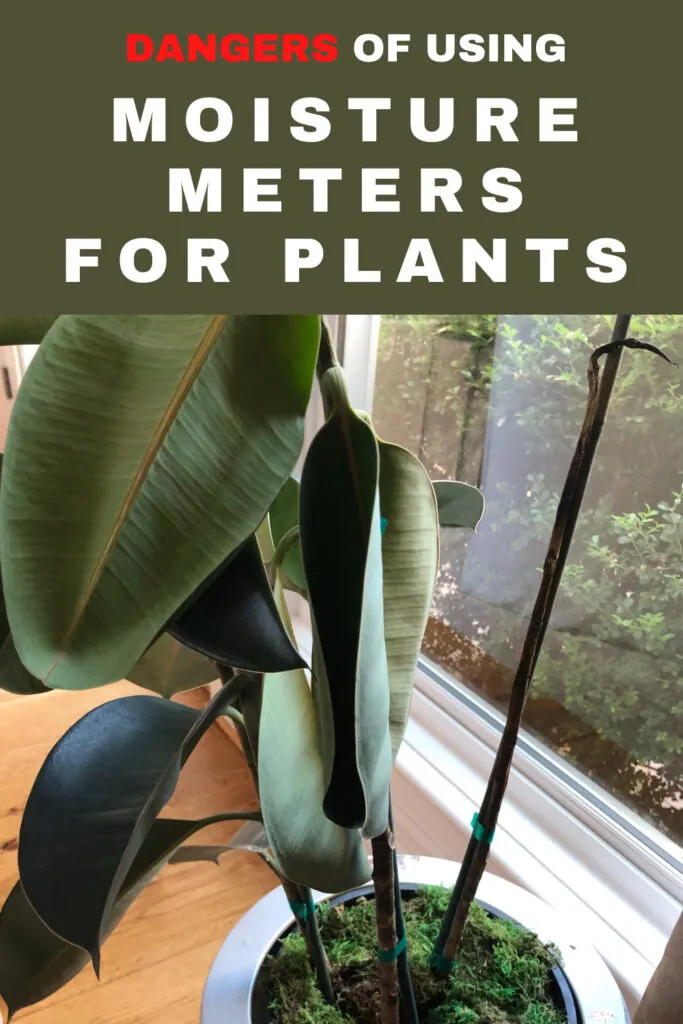
I could easily include an affiliate link and try to get you to buy various moisture meters, but I’m not going to do that. Why?
Because I would not promote something that I don’t believe in and that doesn’t work. Period. My reputation is worth more to me than that, and I would be doing a disservice to my readers!
Soil moisture meters are not only unnecessary, but they can also be very dangerous to your indoor plants!
Countless people have messaged me, both through my blog and my Instagram site (@ohiotropics), that were using moisture meters with disastrous results.
Yet they trusted them and thought that they were doing the right thing, despite their plants drooping from dehydration.
Let me give you one example of one particular case that illustrates my point very well. I wanted to share this example and then tell you what you should be doing instead of using a soil moisture meter.
The question came from a friend:
“Do you have any suggestions as to how to keep these plants from dying? I use a water meter and they haven’t needed to water them for months.”
For months! Take a look at her poor rubber plant below. It is severely dehydrated and one of the trunks appears to be completely defoliated.
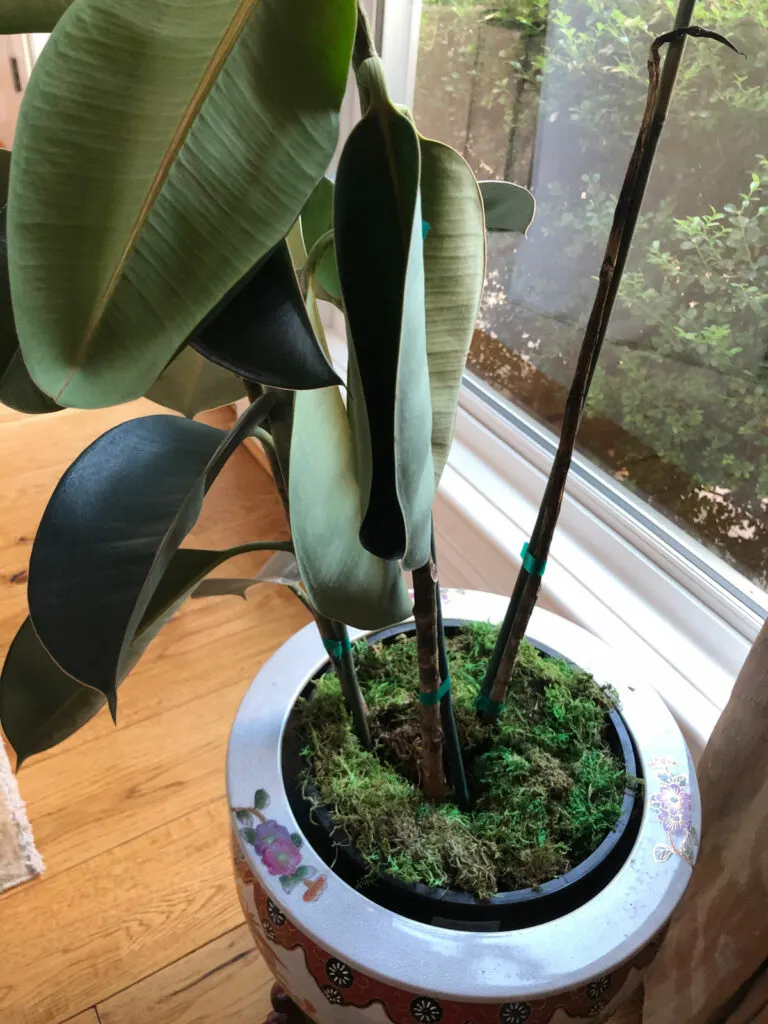
And her Aglaonema doesn’t look like it suffered quite as badly, but the plant has collapsed and and is very dehydrated.
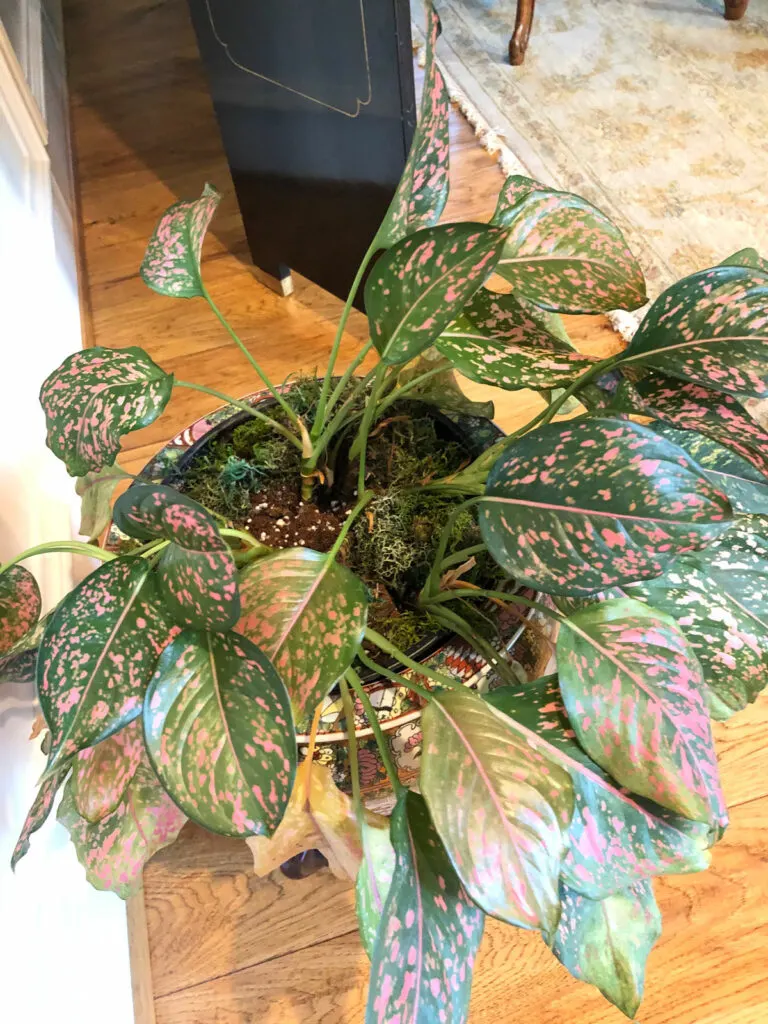
Lastly, here is another Aglaonema that suffered from using a moisture meter.
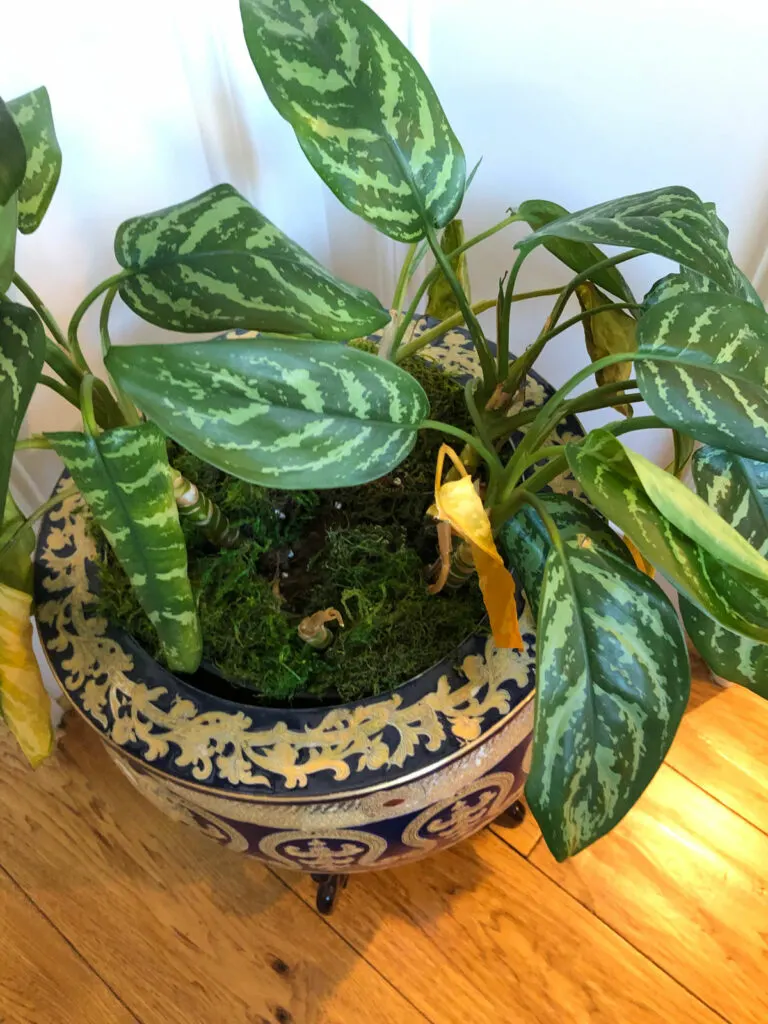
Table of Contents
Why You Shouldn’t Use a Soil Moisture Meter for Indoor Plants
1. They don’t measure water content
Shockingly enough, they don’t actually measure water content!
They measure (or try to measure) conductivity. While water is a good conductor of electricity, it is not the only factor.
Depending on the composition of the soil you have, as well as the presence of various fertilizer salts that are present, you can get very different and very misleading results.
Even if it you use tap water that has is very hard, over time, minerals can build up in the soil and your moisture meter will give false readings.
If you have a very porous, chunky mix with a lot of air, such as orchid bark mixes, it will yield very awful, misleading readings.
2. Most are junk and you can’t calibrate them
Most of the soil moisture meters available on the market are just plain junk. They’re not even worth the few dollars that you spend on them.
We’ve all seen them in nurseries and hardware stores. Don’t be tempted to buy one. Most of them will give you false readings that you simply can’t trust.

They may work initially when brand new (maybe), but they won’t withstand frequent use. Besides, any good piece of measuring equipment will need to be calibrated.
The simple fact that you can’t calibrate them against a known standard is troublesome. But what would you expect from something that only costs a few dollars?
3. It drives the wrong behavior
There are many factors that go into houseplant care, and using a moisture meter takes the thinking out of plant care and this can be very dangerous.
“My soil moisture meter tells me that it doesn’t need anymore water.” I’ve heard this so many times.
If your meter indicates “wet” and your soil is actually dry to the touch, you would likely be inclined to ignore your plant for a while because the meter told you so. When in fact the soil is dry and probably needs to be watered NOW!
Even if you do get a decent moisture meter, you’ll be paying a lot more money for something that that will be adding a lot of unnecessary work and that still may not be that accurate.
So what should you use instead?
How to Judge Soil Moisture for Indoor Plants
I’ll recommend 3 ways that you can check soil moisture for your plants.
1. Use your finger to feel the soil
Sorry to disappoint you, but no gadget is required for this one! A good rule of thumb in general is to wait to water until the top inch or so (more for big pots) is dry before watering again.
Simply stick your finger into the soil and feel it. Does it feel dry to the touch? If so you may need to water. Is it still slightly moist and maybe some soil is sticking to your fingers? Time to hold off watering.
This is an oversimplification though but is a good rule of thumb in most cases! Soil moisture requirements vary depending on what plant you have.
Some plants like ferns hate to dry out much at all, while succulents and some others like to dry out completely in between watering.
For most tropical foliage plants, this rule of thumb (pun intended!) works quite well. Though I tend to use my forefinger and not my thumb…
You’ll also want to visually look at the soil too. Does it look dry? Is it maybe lighter in color? Over time, you will be able to visually judge soil moisture by the color of the soil.
But use both your sense of touch and sight though to be sure.
In one case, I misjudged soil moisture because I only felt it with my finger, but the plant was placed too high to actually see if the soil is dry.
I did that once with my lipstick plant. It was hanging high up and I would reach to feel it. It felt a little cool, but I misjudged it since I couldn’t see the soil. So I kept putting off the watering.
After realizing that I hadn’t watered it in a while, the lower leaves were yellowing so I took the plant down. I could visually see that the plant was bone dry, so I promptly gave it a thorough watering.
If you don’t trust yourself, you can use the next method.
2. Use a chopstick
Take a plain old bamboo chopstick and insert it into your soil at least a couple inches deep.
Leave the chopstick there for 10-15 minutes.
Take the chopstick out and evaluate the color. If the part of the chopstick that was in the soil has darkened, it means it has absorbed water and you should wait to water again.
If there is no color change at all, you’ll probably want to water at that time.
You can also feel the soil with your finger as reassurance if you’re not sure.
3. Lift the pot
Another way to help you judge if your plant needs to be watered is to lift the pot.
You can learn to judge if your plant needs to be watered by picking up your plant and feeling the weight of the pot.
After you water your plant, pick up the pot and see how heavy it feels. Periodically lift your plant after a few days. If the soil has gone bone dry, it will feel substantially lighter. Especially if it is in a lightweight plastic pot.
Closing Comments on Watering Houseplants
- Ditch the moisture meter.
- Use your senses to judge soil moisture. Feel the soil, look at the color of the soil, lift your pot, or use the chopstick method. Figure out what works for you.
- Overtime, the longer you grow plants, you will develop a good instinct and it will become second nature.
Commonly Asked Questions About Moisture Meters
Can moisture meters be wrong?
Like any instrument, quality can vary drastically. Low-end, inexpensive moisture meters are notoriously unreliable. Higher end devices can be helpful, but in the majority of cases, aren’t worth the expense and trouble.
Should you use a moisture meter?
I strongly advise against using them for your houseplants. I’ve seen too many people kill their plants by relying on a moisture meter. Use the other methods described in this post as an alternative.
Are cheap moisture meters any good?
No, they are notoriously inaccurate and should not be relied upon to judge soil moisture for your plants.
If you enjoyed this post, there is of course much more to houseplant care. It is important to know not only when to water, but HOW to water. You may enjoy the following blog posts that I wrote on watering topics:
Overwatering Houseplants: It’s Not What You Think!
Top Myths on Watering Houseplants
Watering Houseplants While Away on Vacation
If you don’t get watering quite right, it can result in a variety of symptoms. Here are two super-helpful blog posts that will help you troubleshoot your plant problems that are related to improper watering:
Are Your Plant Leaves Turning Brown and Crispy? Top 6 Reasons Why!

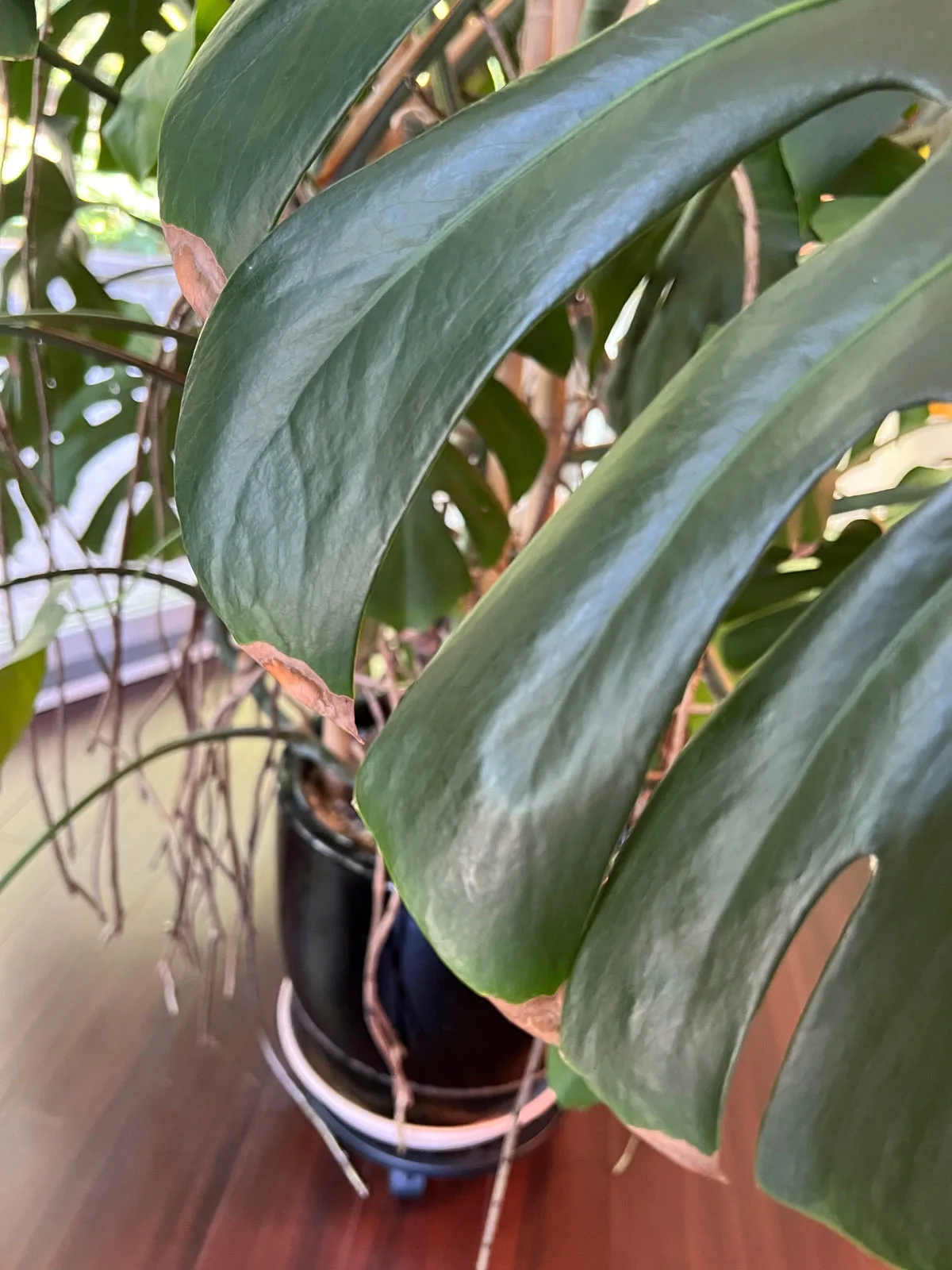
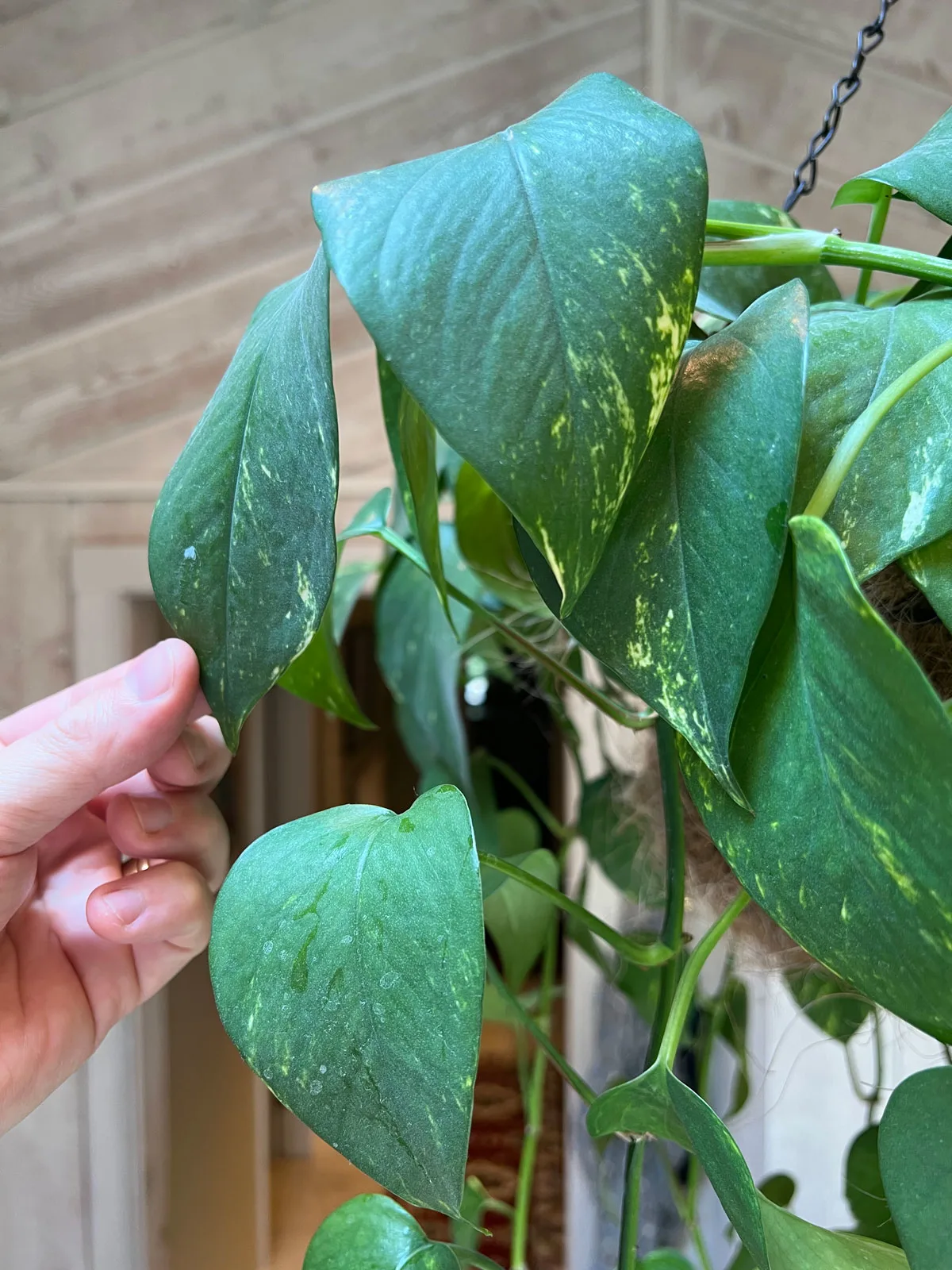
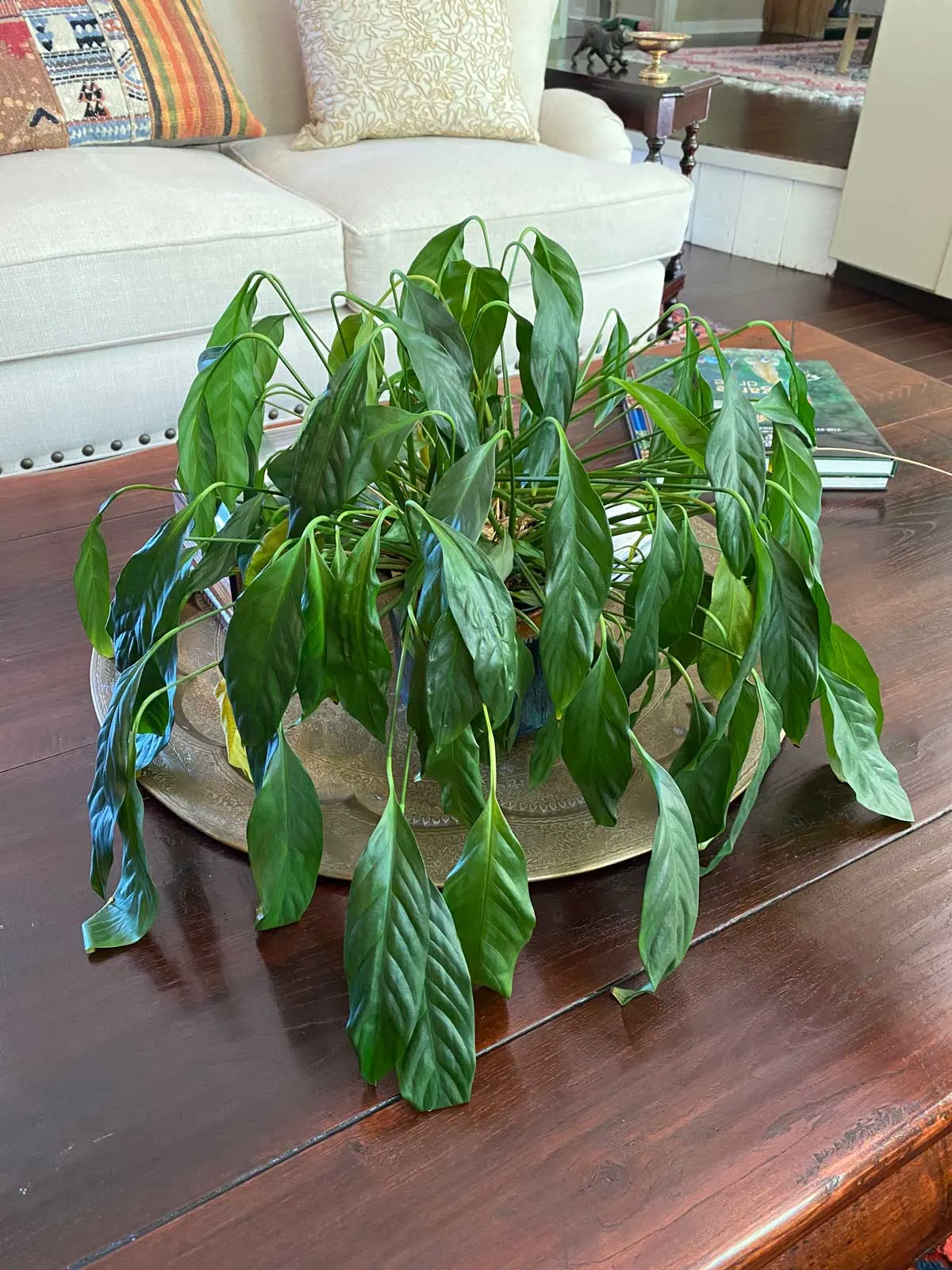
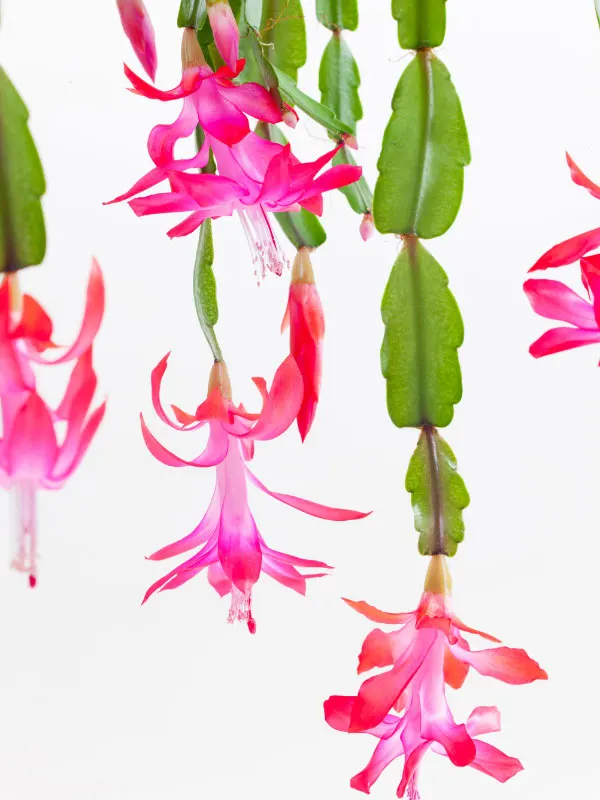
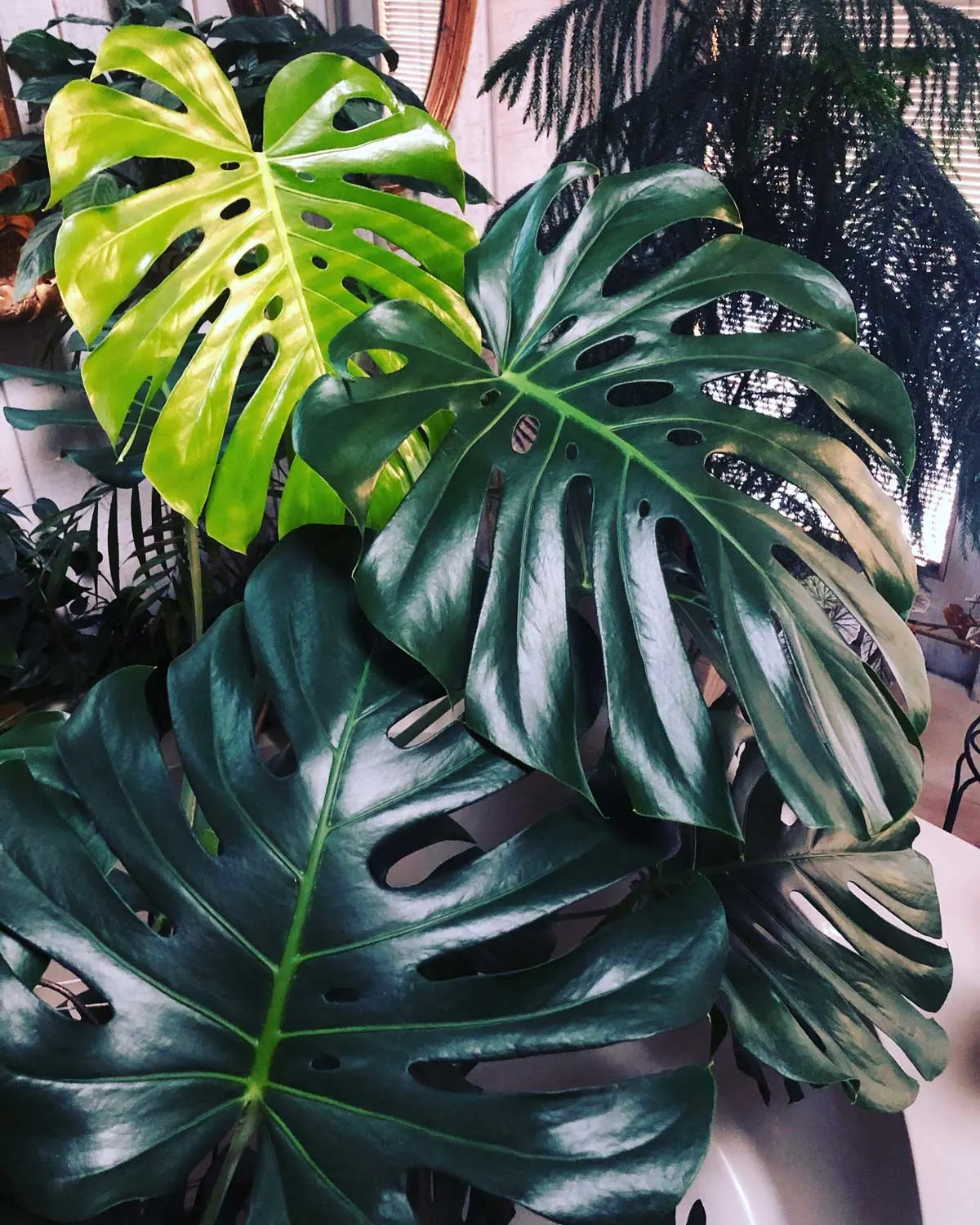
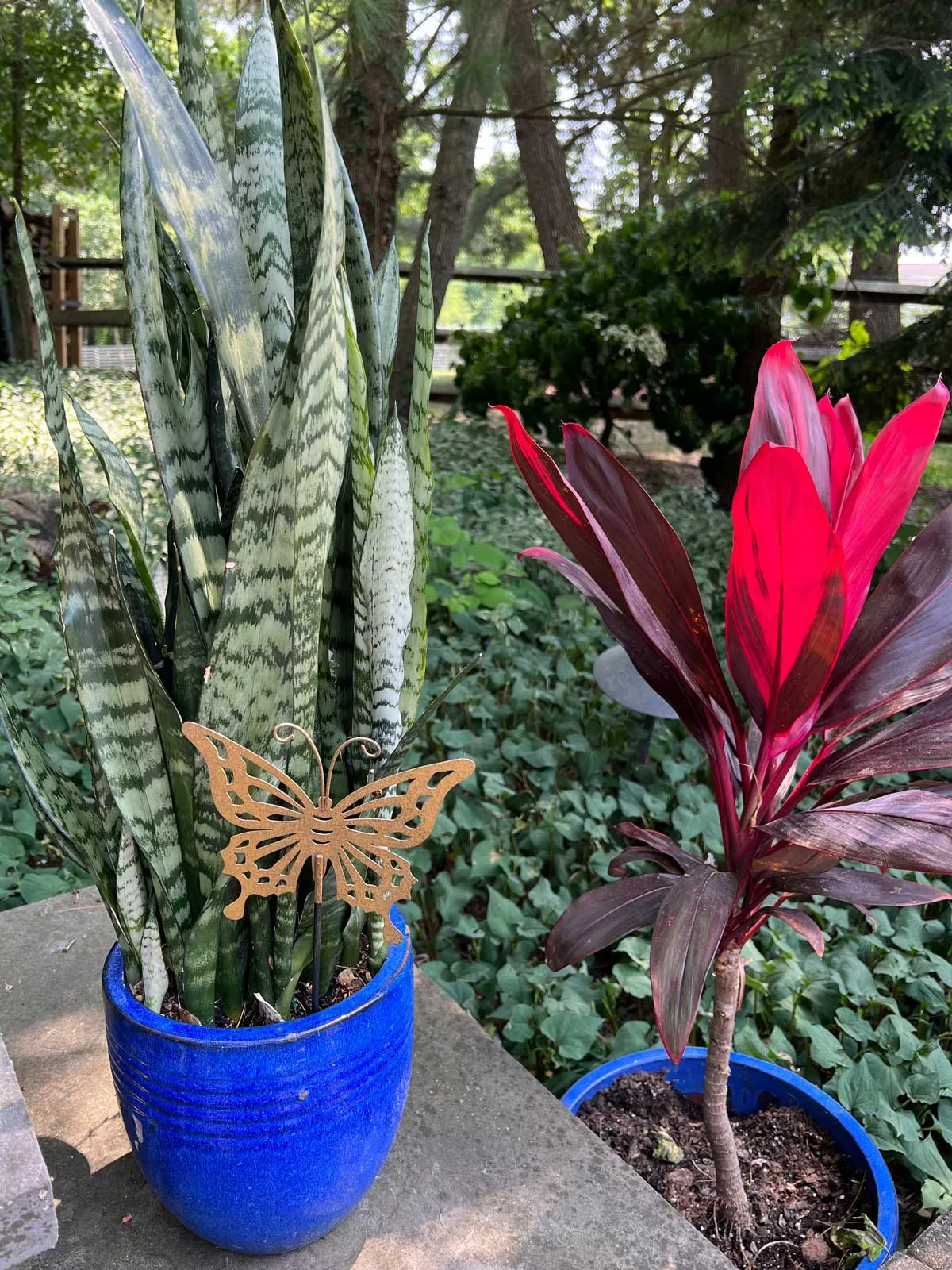
Wendy
Saturday 13th of January 2024
Your article is a lifesaver! I have purchased THREE moisture meters with great reviews, only to be confused by the reading (moist to wet) buy my plant appears to be thirsty. I have also been putting chopsticks in my plants, pull it out and see it was damp...but Im getting a different reading from the meter. Out it goes! From now on I will use the methods you have notated in this article. I will also confirm the "pick up the container" method works well for me, I have smaller plants in my windows, and I NEVER water them unless I pick them up and they feel light and the top of the soil appears dry. Thank you so much for your clear articles!
Raffaele
Sunday 14th of January 2024
I'm so happy that my article was helpful Wendy!
Sheri
Wednesday 27th of December 2023
Thanks for your articles I am glad I found you out here as a good resource for growing my plants. However, I will have to disagree that moisture meters (should be thrown out). Mine saved me twice for only being 8.99. I had a cactus that I noticed the heaviness of the pot after watering over 4 days prior and when I stuck the moisture meter in it was wet. I knew then I was in trouble, so I repotted my cactus. I am glad I did because the roots were so wet due to the soil I was using. Anyways, I think like everything else we can’t say “don’t or should not” use the tools we have and make judgment calls.
Raffaele
Thursday 28th of December 2023
I agree with you Sheri. I'm just sharing my experiences with helping others when they've had trouble because of faulty meters. If yours is working to your liking, by all means keep using it if it is helping!
Nisa
Sunday 13th of August 2023
Your blog is pertinent and precise, I look forward to reading more of them.
I don't know if you have covered this topic about bottom watering. I had a large dracaena plant and it was partially dead from overwatering. The bottom was wet but the top soil was very dry and the leaves were brown at the tips. I decided to transplant it and saved a part of the plant. Do I water this plant from the top, making sure it gets a thorough soaking and then let it dry out?
Thanks.
Raffaele
Monday 14th of August 2023
I personally think it's a better idea to water from the top and let excess water drain away. This also helps to leach out accumulated minerals and fertilizer salts (whereas with bottom watering, they build up and can cause issues over time).
bernadette
Tuesday 20th of June 2023
You are so right. I found that out a couple of weeks ago. My haworthia had done well over winter and had produced loads of pups [10 or more]. She had grown too, but the pot was heavy 12" [30cm] and I transferred the pups to separate 5cm pots for growing on. I used a gritty mix, so not to overwater. My moisture meter kept saying dry each week, so I watered. They looked dark brown, so I put them in a less lit spot, in indirect light. No change, they looked sick. After 3 weeks I pulled them out to check what was going on.The grit and soil were soaked and the roots were rotted. Yet the moisture meter said the soil was "dry". Turns out the air pockets in the gravel stops the meter detecting moisture properly. As the pots are so small, and my fingers are big, I use the bamboo sticks used for kebabs at bbq's and supporting young plants. Works well. Can I leave these in all the time to avoid stabbing the roots each time? Or will the sticks rot?
Raffaele
Tuesday 20th of June 2023
Thanks for the testimonial Bernadette! It helps to have others chime in too on their experiences to reinforce the ideas in the blog post. You can leave the bamboo sticks in there. They may eventually rot, but it will take longer than you'd think.
Bonnie
Sunday 12th of March 2023
I was considering buying a moisture meter but that little voice in my head was persistently asking “wouldn’t that damage the roots”? Searching for meters that would not cause damage I came across your blog! You cleared up so many questions. I immediately subscribed and I look forward to learning everything I can.
Raffaele
Monday 13th of March 2023
Glad you enjoyed the post Bonnie! I hope you continue to enjoy my blog :-)